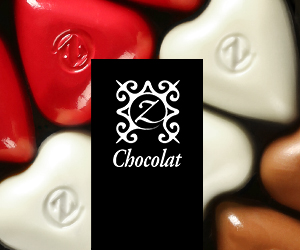
Crafting a marketing campaign that truly resonates means cutting through the digital noise with intention and style. It's not enough to simply promote a product or service. The campaign must tell a story, stir emotion, and deliver a purpose that connects with its audience. Whether it's a social media rollout, a multi-platform product launch, or a promotional push tied to an event, success depends on a seamless blend of clarity, creativity, and consistency. Every element—message, visual, tone, and timing—should work in concert. The result is a campaign that not only grabs attention but compels action, builds trust, and leaves a lasting impression.
Start With a Strong Message
The foundation of any campaign lies in a clear and persuasive message. Before visuals or platforms are even considered, the campaign should articulate exactly what it wants to say and why that matters to the audience. This message should reflect the core values of the brand and be expressed in a voice that aligns with its identity. Whether it's bold and daring or warm and conversational, the message should feel authentic and consistent across all channels. Strong campaigns anticipate the needs, concerns, or desires of the target demographic and present a solution or opportunity that feels both relevant and appealing. From a catchy headline to the final call to action, the message must be sharp, concise, and confidently delivered.
Know the Audience in Detail
Understanding the audience isn't about basic demographics anymore. To design a campaign that truly connects, marketers need a vivid picture of the customer's lifestyle, values, and preferences. Researching behavioral patterns, favorite platforms, spending habits, and tone sensitivities can inform everything from wording to timing. Campaigns that feel tailor-made tend to perform better because they reflect a deeper level of empathy and awareness. Whether targeting working professionals with limited time or creative Gen Z audiences with an eye for authenticity, marketers should aim to speak directly to those people in language that feels personal, timely, and relevant. A campaign that understands its audience naturally earns attention and trust.
Use Visuals With Purpose
Visual storytelling is an essential part of modern marketing, but its effectiveness depends on intentionality. The design should not simply be beautiful. It should elevate the message, evoke emotion, and reinforce brand identity. Color palettes, typography, and imagery should all be aligned to create a cohesive visual presence. High-quality photography, sharp video content, and motion graphics can add energy and sophistication. Whether the campaign lives on a billboard, in a digital ad, or across Instagram reels, visuals must capture interest within seconds and be instantly recognizable. The best campaigns don't just look good; they look intentional, and every element contributes to a unified visual story.
Balance Creativity With Clarity
A clever campaign idea is exciting, but if the concept obscures the core message, it risks falling flat. Striking a balance between inventive presentation and practical clarity is key. Messaging should never get lost in complex metaphors or overly abstract themes. The audience should understand what the campaign is about quickly and effortlessly. Creativity is at its best when it enhances comprehension, not when it competes with it. Clear headlines, defined value propositions, and distinct brand voices anchor the campaign even when the concept is highly stylized. Creativity should support, not distract. When the style and substance work together, the campaign becomes both eye-catching and effective, pulling viewers in while guiding them seamlessly toward action.
Include a Compelling Call to Action
Every campaign should point the audience toward something actionable. Whether that's subscribing to a service, making a purchase, sharing content, or attending an event, the call to action must be both persuasive and easy to follow. The phrasing should match the tone of the campaign while emphasizing benefit. Instead of simply saying click here
, it could invite the viewer to discover what's next
or experience it first
. Positioning the call to action strategically—on landing pages, in video end frames, or across carousel posts—can maximize engagement. It's important that the desired outcome is specific, measurable, and rewarding for the audience. When a campaign leads to a clear, rewarding action, it becomes more than a message. It becomes a movement.
Marketing campaigns that stand out don't happen by accident. They are built on layers of insight, intention, and innovation. From the spark of a core message to the final call to action, each decision shapes the narrative and impact. The most successful campaigns blend message with mood, design with clarity, and strategy with instinct. They understand their audience deeply and speak in a tone that resonates. And most importantly, they guide the viewer toward an action that feels natural, timely, and worthwhile. In a world where attention is fleeting, a well-crafted campaign can still capture hearts and deliver results when it's created with purpose and precision from the very beginning.
EDITORIAL POLICY
The Flash List is dedicated to providing trustworthy editorial content by maintaining strict ethical standards, journalistic integrity, and credible professionalism regardless of any remuneration as working media. The Flash List is not affiliated with third-party companies mentioned and makes no endorsement or guarantee expressed or implied. The preceding article, which contains affiliated link(s) for which compensation was received, is intended for informational reference only and does not constitute advice of any kind. Moreover, a qualified professional should be consulted regarding any lifestyle consideration, medical treatment, or monetary transaction, etc. Content is published in accordance with USFTC regulations and terms and conditions.
MORE ON THE FLASH LIST
































